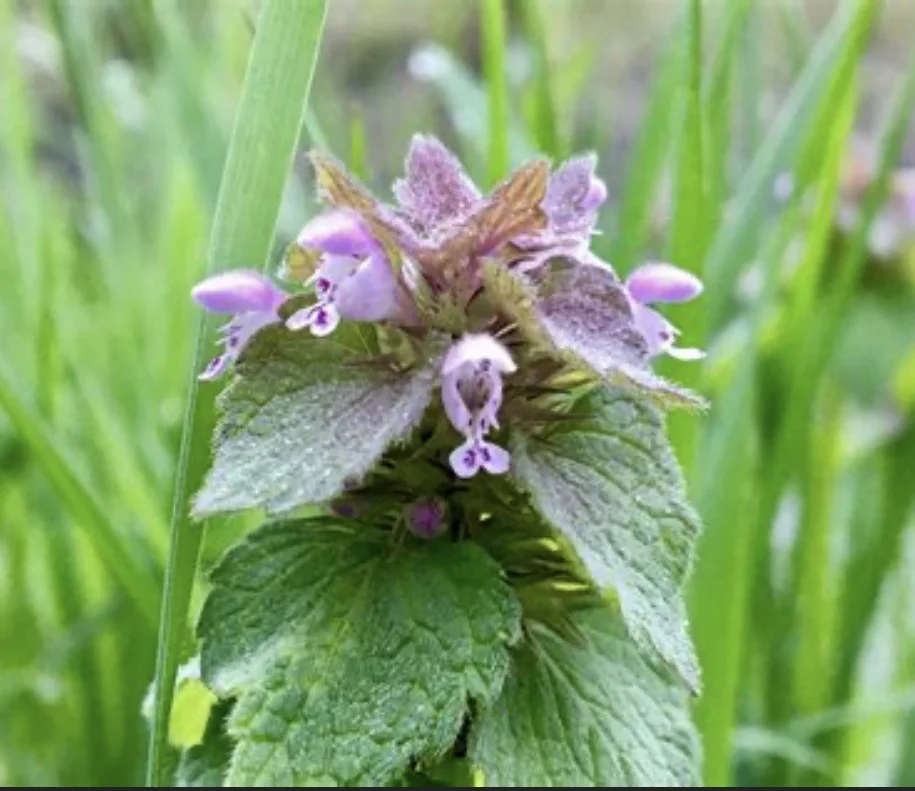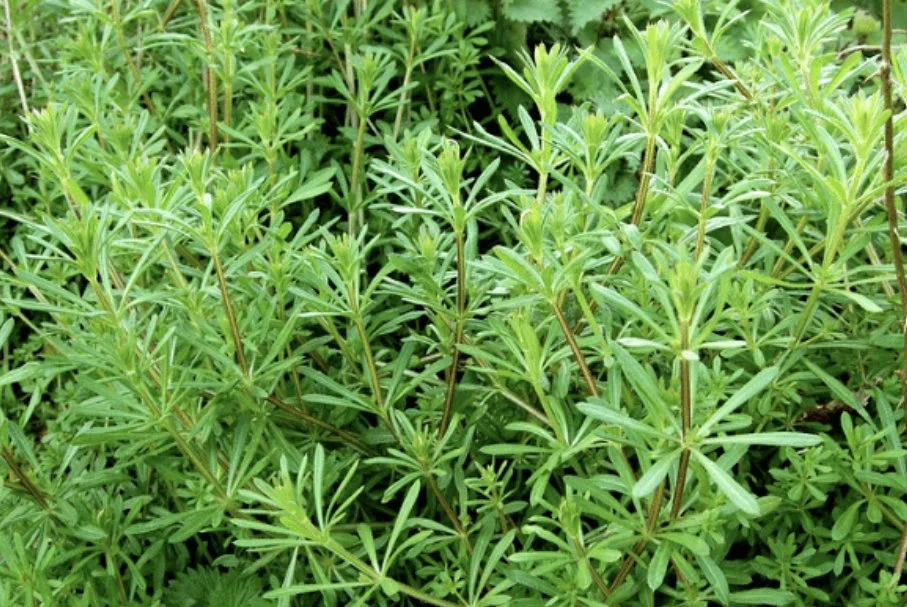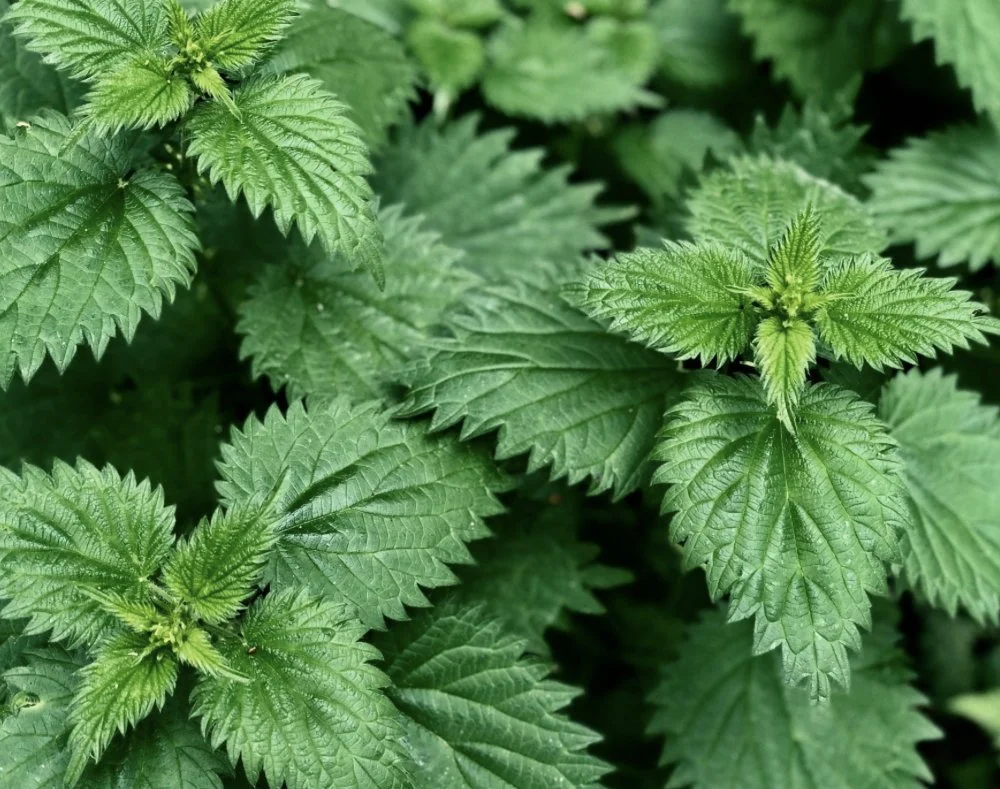5 Amazing Plants to Forage in Spring
“Study nature, love nature, stay close to nature. It will never fail you.”
Frank Lloyd Wright
It is spring again and the plants are almost as excited as I am for the longer days and warmer weather. Now is a great time to get out of the house and go on a delightful foraging walk. Spring is a great time to forage for medicinal plants and the earth has a lot to offer this time of year. Learning about, growing and foraging for and using plants can be a great way to connect more with nature and provide a fulfilling experience for your friends and family. To get started let's go over some basic and important rules to follow if you are new to the wonderful world of foraging;
KNOW YOUR PLANTS
Only forage for plants that you can positively identify, make sure to use resources to help verify the correct plant. Many plants have look-a-like plants that can be unsafe for you to use. If you have never foraged before check out some local foraging guides or foraging groups.
2. ONLY TAKE WHAT YOU CAN USE
The rule of thumb is to not forage more than ¼ of what is available and be mindful of the ecosystem of the area. If only a couple plants are available it might be best to not forage from that spot and let it grow and reproduce. Invasive species however can be foraged more aggressively-maybe take the whole plant and help out the native species while you're at it! Remember that flowers, especially in early spring, are vital food for the pollinators and other wildlife, so please consider others when foraging.
3. LEGAL AND SAFE LOCATIONS
Many plants in public areas are being sprayed with chemicals so use caution in these places. Always be safe when foraging and know your location, if it has been sprayed in the last 3 years it is likely not safe. The side of the road, although tempting, has likely been sprayed with herbicides and is not a safe place to forage for medicals.
Purple Dead Nettle (Lamium purpureum)
Botanical Name: Lamium purpureum
Family: Lamiaceae-Mint Family
Part Used: Aerial parts-flower, leaves, stem
Energetics: Warming and drying
Properties: astringent, purgative, diuretic, diaphoretic anti-inflammatory, anti-fungal, and anti-bacterial
Uses: food, digestion, gut health, cuts/wounds, rashes/skin issues, allergy/immune system
Preparations: food, tea, oil, tincture, vinegar
These are one of the first plants I see bloom in early spring with their adorable little purple flower tops and dark green leaves. These plants can provide much needed nutrition after a long winter. Purple Dead Nettle is well loved by pollinators and is packed with vitamin c, fiber, iron and antioxidants.
How to Identify & Use
Purple Dead Nettle has the characteristic square stems that you see in plants in the mint (Lamiaceae) family. They produce lovely hairy heart-shaped, triangular purple leaves on the tops that transition to green near the bottom and have a red-purple stem. Purple Dead Nettle produces about 6-10 small tube-like pink-purple flowers near the top leaves in the spring. They are usually low growing and can find them growing in patches. The leaves, flowers and stems of Purple Dead Nettle can be used in a variety of ways; everything from fresh eating in salads and soup to creating poultice and salves for wound healing. This amazing plant contains an abundance of immune boosting compounds known as polyphenols that are great for the gut microbiome. Purple Dead Nettle has a bitter flavor so many prefer to cook it before eating and can make a great addition to herbal teas. When consuming internally it can have a diuretic effect so use caution. Externally Purple Dead Nettle is great for wound healing and skin irritations, it can be used as a poultice by grounding it up and mixing with some clean water and applying to bite or wound. Another great use for Purple Dead Nettle is that it can be used to dye natural fibers into a lovely shade of green.
There are a couple non-toxic Purple Dead Nettle look-a-likes to be aware of;
Henbit (Lamium amplexicaule)
A couple ways you can tell the difference between these two plants is that Henbit has rounded leaves that do not transition from purple to green, its upper leaves attached directly to the stem and flowers have darker spots on the lower lips and fine hairs on the top of the hood.
Ground Ivy (Glechoma hederacea)
Some way you can tell the difference between these two plants is that Ground Ivy, like its name, sprawls out low to the ground unlike Purple Dead Nettle that grow up on stems. Ground Ivy does not have a color transition from green to purple and has more rounded leaves than Purple Dead Nettle.
2. Dandelion (Taraxacum officinale)
Botanical Name: Taraxacum officinale
Family: Asteraceae
Part Used: leaves, flowers, sap, seeds, roots
Energetics: cooling, drying
Properties: alterative, digestive stimulant, diuretic, nutritive,anodyne, antioxidant, inflammatory modulator, nutritive,
Uses: food, liver function, poor digestion, skin eruptions, water retention
Preparations: food, oil, tincture, vinegar
These happy, useful and determined little plants can be found almost everywhere around the world. It is one of the first flowers to pop-up in spring and provides much needed nectar for the bees. Often dandelions are seen as a “weed” but are actually one of the most useful plants with every part of the plant having nutritional and medicinal uses.
How to Identify & Use
Most of you will probably know how to identify this plant, in fact some of you may have made lovely flower crowns, blown wishes on or even went to battles with this precious little “weed”. The name Dandelion comes from the French “dent de lion” which translates to “lion’s tooth” referring to its dark green spiky leaves. The Dandelion’s flower is sunny yellow and their seed head is a majestic puffball that carries their seeds far and wide.
The leaves of the dandelion are full of nutrients and great for digestion and gut health. They contain calcium, potassium, magnesium, vitamin c, phosphorus, beta-carotene, zinc and manganese. Dandelion leaves are full of a starchy carbohydrate called inulin that acts as a prebiotic in the body and helps maintain a healthy gut microbiome. Caution should be used due to the diuretic effects of dandelion leaves when taken in large amounts and in tincture form.
The dandelion has adorable, bright, little flowers that pop up in spring and remind us that the longer days of spring are upon us. The flowers of dandelion can be used as food, put in soups and salads fresh or dried, use to make syrups, jelly and infused in honey and vinegars. Dandelion flowers are high in nutrients such as lutein, beta carotene and flavonoids. One of my favorite ways to use dandelion flowers is for the skin. You can infuse dandelion flowers in oil and use them in various skincare products. Our homemade dandelion salve has been found to be especially useful to use on insect bites.
Check Our YouTube Video on Dandelion Foraging
3. Cleavers (Galium aparine)
Botanical Name: Galium aparine
Family: Rubiaceae
Part Used: stems, leaves, seeds
Energetics: cool, moistening
Properties: diuretic, alterative, inflammation modulating, astringent
Uses: food, kidneys, bladder, lymphatic system, skin
Preparations: food, oil, tincture, vinegar
This is one plant that has a tendency to introduce itself to you by clinging onto anything it can get its sticky little hands on. This ‘stage five clinger’ plant is probably just trying to reach out and offer its assistance because it contains such amazing medicinal properties. Cleavers are anti-inflammatory, antispasmodic,contain immune boosting properties, such as vitamin c, and are great for the lymphatic system. These sticky little plants are a good cleaner of the bladder, kidneys and liver. They have also been used for skin conditions such as eczema and psoriasis.
How to Identify & Use
Cleavers have leaves that grow out from the stem in a star-like way, known as whorls, each of these whorls contains about 6-8 leaves. The cleavers' stem and leaves are covered in small hairs that have little hooks that help it stick to clothing, animal fur and other plants. You will mainly find them growing in mats on the ground and have small, white flowers when in bloom. There are some look-a-like plants in the same family so make sure you have the right one.
Cleavers are amazing for the lymphatic system, they have a gentle detoxifying action and are perfect for “spring cleaning” the body. They are best harvested before they bloom in late spring, although flowers can be harvested to use in salves for the skin. Cleavers are best used fresh and can be juiced or made into an infusion. They also are great to use in a tincture with other lymphatic drainage herbs but because of the high water content you will want to use a 50% (100 proof) alcohol. Cleavers have been known to help the kidneys and urinary tract; especially in cases of chronic urinary tract infections.
*Caution* Cleavers due to its diuretic action should not be used by someone who has diabetes or those with edemas due to impaired heart or kidney. Contact dermatitis can occur for some when touching Cleavers, which can indicate an allergy to the plant and therefore should not be eating or used on skin. Try a skin test by rubbing the plant on a sensitive area and waiting 48 hours to see if a rash occurs before eating and always try a small amount first. Don't eat cleavers if you are pregnant, may become pregnant or nursing, or are on high blood pressure and/or blood thinning medications.
4. Stinging Nettle (Urtica dioica)
Botanical Name: Urtica dioica
Family: Urticaceae (nettle)
Part Used: young leaves, roots, seeds
Energetics: cooling, drying
Properties: diuretic, astringent, nutritive. styptic
Uses: food, allergies, eczema, fatigue, hypothyroid, metabolism, bladder, kidneys
Preparations: food, herbal infusions and teas, tinctures
Although Stinging Nettle is not the easiest herb to forage its ‘‘bite’ is well worth its deeply nourishing properties. This plant is a powerhouse when it comes to vitamins, minerals and phytonutrients and much needed plant medicine in the world today. Many of our foods today are missing the nutrients they once had due to depleted soil health and Stinging Nettle can be a great way to get the minerals your body desperately needs for optimum health and well-being.
How to Identify & Use
Stinging nettles are often found in damp, rich soil and form dense stands which spread underground stems called rhizomes. Nettle stems are slender, square and can grow 6 to 8 feet tall. Leaves are thin, dark green and about 2 to 4 inches long and jagged edged, veined and pointy tip. Nettles have both ordinary and stinging hairs on stems and undersides of the leaves, so use caution when foraging. Stinging Nettle should be harvested before the plant goes to seed. You will want to use gloves to protect your hands and cut with scissors or pinch off the new growth on the top couple inches of the plant. Seeds can be collected by cutting off the flower stalk and hanging it in a paper bag to dry and roots of the plant can be dug up after the plant dies back in winter. Do not harvest leaves if the plant has flowered because once it flowers and goes to seed it produces an alkaloid that could be harmful to the kidneys.
Stinging Nettle leaves need to be cooked or dried before use to eliminate the stinging hairs. Young leaves of the plant are great blanched and used in any dish you would use greens in, such as soups, pesto and stir-fries. You can also blanch the young leaves and freeze them to add into dishes later. The leaves can also be used fresh or dried for teas, infusions and tinctures. The seeds can be eaten fresh or dried and used in a tincture and the roots can be dried to use in a decoction or tincture.
*Caution* Stinging Nettle has some look-alikes so be sure you can identify the correct plant. Be sure that your foraging area is safe as stinging nettle can take in heavy metals from the soil. It is a diuretic so use caution with use and if you have a medical condition.
5. Douglas Fir (Pseudotsuga menzeisii) Spring Tips
Botanical Name: Pseudotsuga menzeisii
Family: Pinaceae (pine)
Part Used: bark, needles, resin
Energetics/Properties: anti-inflammatory, antioxidant, antiseptic, antimicrobial, astringent, expectorant, sedative
Uses: respiratory system, immune system, digestive system
Preparations: food, herbal infusions and teas, tinctures
Although this spring foraging plant might not be available to you, depending on where you live, it is one of my favorites so I couldn't resist include it. The mighty Douglas Fir tree isn’t just a great tree for when you need a good hug, it also provides bright green spring tips that are highly nutritious. The spring tips of the Douglas Fir are rich in vitamin c and electrolytes and can be used fresh, frozen or dried. They can be used in teas, infused in honey or vinegar and used in body care products. Needles can be harvested and used any time but the early spring growth is more tender and better tasting when used for fresh eating.
How to Identify and Use
The Douglas Fir Tree has thick grayish deeply furrowed bark and a characteristic white stripe on the underside of its needles. The Western or Pacific Yew tree can look similar and is considered poisonous when consumed but has reddish bark that looks like paper and no white stripe on its needles. The Douglas Fir tree spring tips can be eaten fresh, frozen and dried. They are great to use in teas both fresh or dried. They can also be infused in oils, vinegars and honey for later used. Stocking on spring tips to use later in winter can be a great way to boost the immune system before the darkness settles in.
Douglas Fir Tree
Western Yew Tree
I hope you find this useful and can get outside and enjoy nature this spring and learn about the plants that lay just outside your front door!
Stay Wild,
Jac
*Medical Disclaimer*
Some herbs are not appropriate if you are pregnant, breastfeeding or taking certain medication. Use caution with using any plant if you have an allergy and always consult your medical provider before using herbs. It is the policy of Among Wild Things LLC. not to advise or recommend herbs for medicinal or health use. This information is intended for educational purposes only and should not be considered as a recommendation or an endorsement of any particular medical or health treatment.








